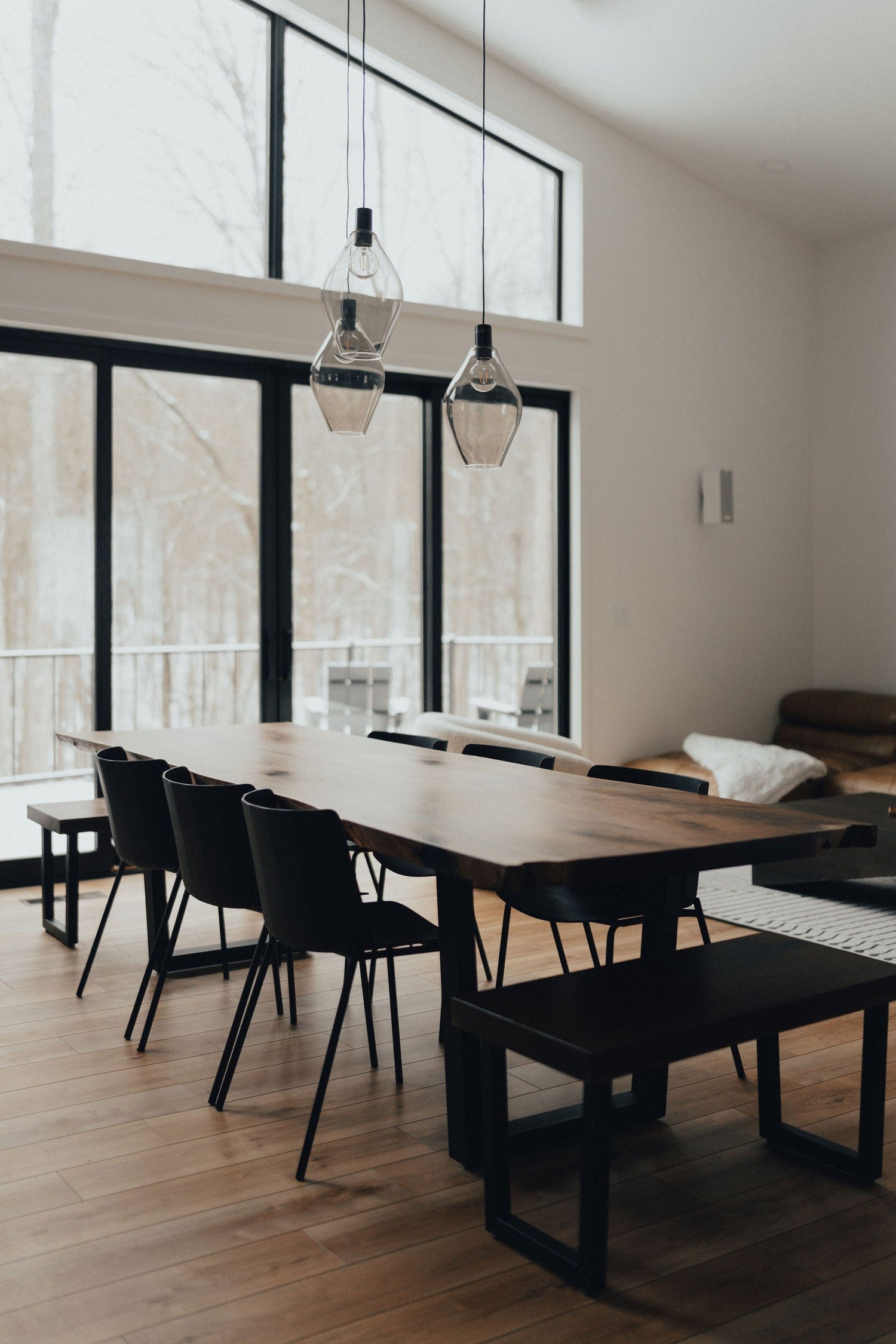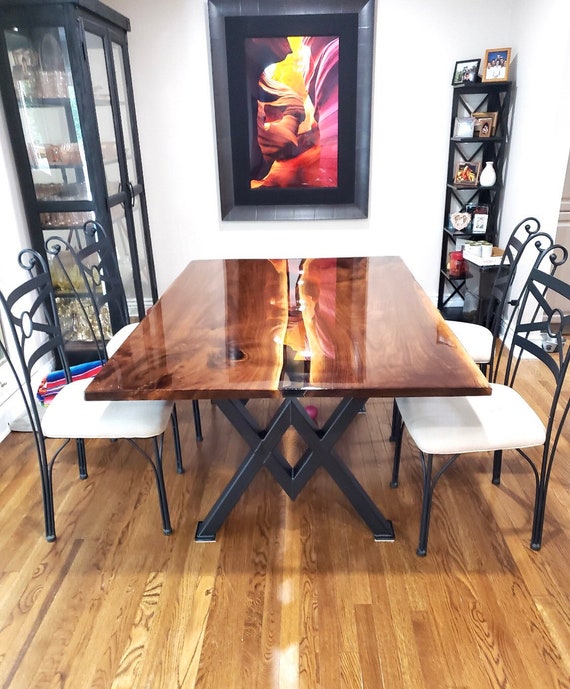From Typical to Modern: Discover the Ideal Eating Room Table Legs for Your Design
The option of dining area table legs plays an essential role in specifying the total personality of your space, bridging the void between traditional workmanship and modern-day looks. While traditional layouts such as cabriole and turned legs evoke a sense of classic elegance, modern styles like barrette and geometric options offer a chance for striking aesthetic interest. Assessing the ideal balance in between these designs requires a nuanced understanding of your existing decor and personal preference. As you think about these components, the inquiry remains: exactly how can you flawlessly integrate these varied leg styles to produce an unified eating experience?
Recognizing Table Leg Styles
The variety of dining-room table leg styles can substantially affect both the visual appeals and capability of the area. Each leg design contributes unique useful functions and aesthetic aspects, accommodating diverse design preferences and use needs. Recognizing these designs is critical for choosing the best table that aligns with your overall indoor style vision.
For example, conical legs use a clean, timeless appearance that can improve a space's beauty, while pedestal bases give security and maximize legroom, making them suitable for smaller sized spaces. Barrette legs, a trademark of mid-century modern-day style, introduce a commercial style, allowing for a ventilated, open feeling. Trestle legs evoke rustic beauty, giving durable support and a feeling of timelessness.
Moreover, the selection of products plays a significant function. Wooden legs can bring heat and texture, whereas steel choices often share a sleek, contemporary ambiance. Ultimately, recognizing table leg styles is crucial for developing a cohesive dining area that reflects individual style while making sure usefulness and comfort. By thoughtfully taking into consideration these aspects, you can boost both the practical and visual allure of your dining room.
Traditional Table Leg Options
When choosing dining-room table legs, typical options typically symbolize classic elegance and workmanship. These layouts mirror an abundant heritage and a commitment to quality, making them excellent for those who appreciate classic aesthetics.
One of the most famous standard leg designs is the cabriole leg, identified by its elegant curved form. This layout often features decorative carvings and is most frequently located in Queen Anne and Chippendale furnishings. An additional prominent alternative is the transformed leg, which flaunts a collection of smooth, rounded forms that offer a traditional appearance while preserving stability.
Additionally, the straight leg, while easy, provides a tough and basic structure that can blend flawlessly with a range of tabletop designs. For those attracted to ornate outlining, claw-and-ball feet legs stimulate a feeling of grandeur and can serve as a spectacular prime focus in any type of dining room.
Last but not least, stand bases, although not strictly legs, supply a different typical choice Clicking Here that enables ample legroom and can be wonderfully carved. Each of these conventional leg designs adds to the overall atmosphere of a dining-room, marrying function with aesthetic charm.

Modern Table Leg Designs
Modern table leg layouts use a diverse series of styles that emphasize clean lines and innovative products. These styles usually focus on performance while functioning as striking focal factors within a dining room. Minimalist looks prevail, with legs crafted from materials such as steel, glass, and crafted timber, which add Click Here to a modern and airy feel.
One prominent style is the barrette leg, defined by its slender, conical framework that gives security without frustrating the tabletop (dining room table legs). This design is typically found in mid-century contemporary furnishings and can effortlessly match numerous eating table forms. Another pattern is making use of geometric shapes, where legs might tackle asymmetrical or angular forms, including visual passion and a touch of creativity

Blending Designs for Distinct Rooms
Usually, house owners seek to create distinct eating rooms that reflect their personal style by blending various style aspects. This approach permits for the consolidation of varied looks, causing a harmonious yet distinct atmosphere. For example, combining a rustic wood table with sleek, modern-day steel legs can produce a distinctive comparison that raises the space's general appeal.
In addition, integrating vintage table legs with modern table tops can evoke a feeling of history while maintaining a modern sensibility. Such combinations not only showcase private preference but additionally motivate creativity, permitting property owners to curate an area that feels both individual and inviting.
Shade plays an essential function in this blending process; selecting table legs that complement or comparison with the existing check that color pattern can improve visual passion. Whitewashed legs can soften the daring of a dark table surface area, developing a well balanced visual.
Tips for Choosing the Right Legs
Choosing the right table legs is necessary for attaining both performance and visual appeal in your dining space. Begin by taking into consideration the total style of your area. Conventional settings take advantage of legs that feature detailed carvings or transformed designs, while modern rooms may call for streamlined, minimal designs.
Following, assess the height and stability of the legs. dining room table legs. Basic table range between 28 to 30 inches in height, so ensure the legs complement this measurement for comfort. Additionally, durable materials, such as hardwood or metal, can boost stability and longevity
Review the leg form as well-- options consist of straight, tapered, or pedestal layouts. Straight legs use a traditional appearance, while conical legs can add a touch of style. Pedestal bases supply adequate legroom and are perfect for smaller sized areas.
Conclusion
In summary, selecting the optimal eating space table legs requires mindful consideration of both modern and traditional styles. Typical choices such as cabriole and transformed legs provide ageless sophistication, while contemporary layouts like hairpin and geometric shapes give a contemporary touch. By integrating leg style, elevation, and material with the overall decor, a natural and welcoming ambience can be accomplished. Ultimately, the selected table legs must show the preferred aesthetic, improving the eating experience within the room.
The variety of eating space table leg designs can considerably influence both the visual appeals and functionality of the space. Ultimately, understanding table leg styles is essential for producing a natural dining location that reflects personal style while ensuring usefulness and convenience.One of the most renowned standard leg styles is the cabriole leg, characterized by its stylish rounded shape. Straight legs use a timeless look, while conical legs can add a touch of elegance.In recap, choosing the perfect eating area table legs requires careful factor to consider of both contemporary and conventional styles.
 Yasmine Bleeth Then & Now!
Yasmine Bleeth Then & Now! Ashley Johnson Then & Now!
Ashley Johnson Then & Now! Keshia Knight Pulliam Then & Now!
Keshia Knight Pulliam Then & Now! Sydney Simpson Then & Now!
Sydney Simpson Then & Now! Pierce Brosnan Then & Now!
Pierce Brosnan Then & Now!